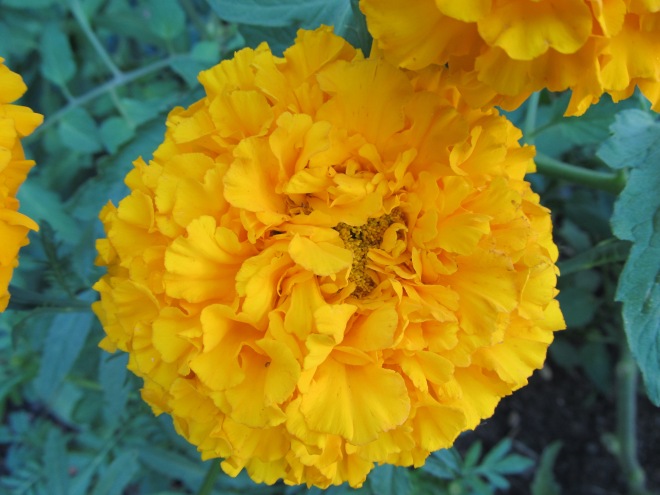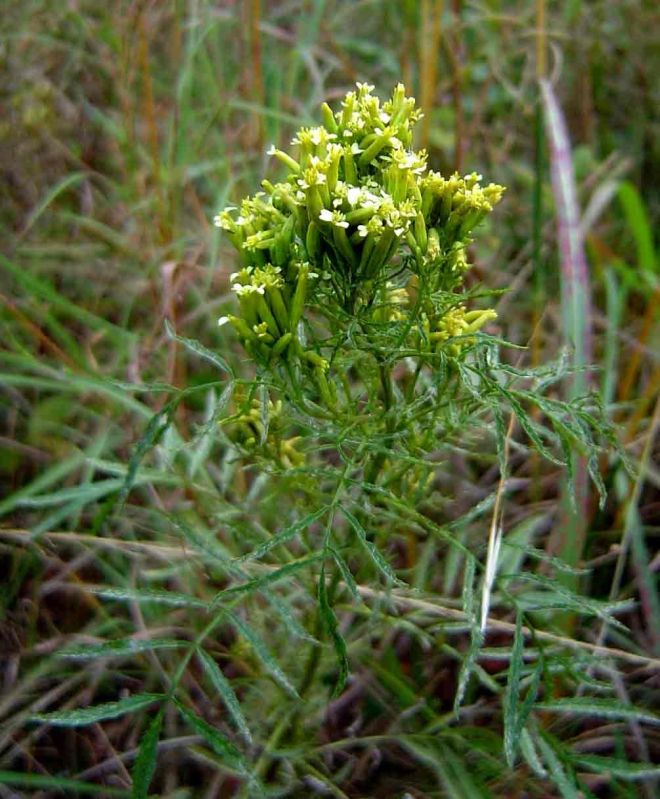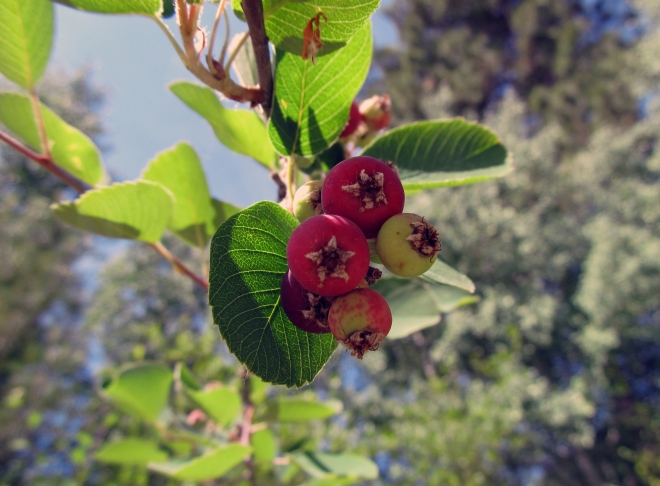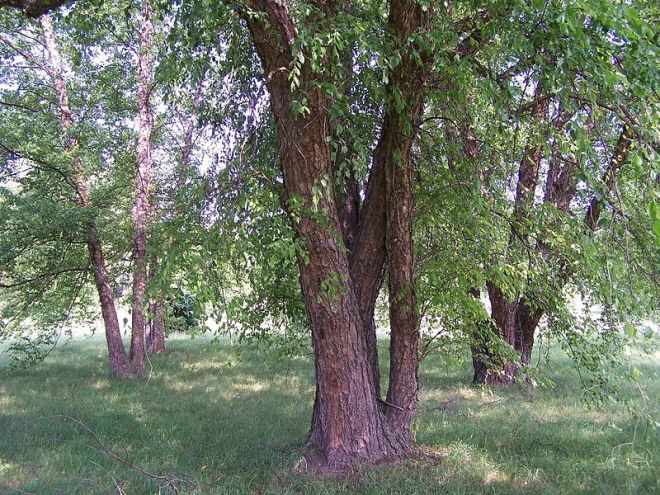Marigolds are easily one of the most commonly grown annual flowers. They are so common and pervasive, in fact, that they are often overlooked and underappreciated. I, for one, had discounted marigolds long ago, seeking instead for plants considered to be more rare, unconventional, and unusual to place in my garden. But then I started looking into this commonplace plant and, to my surprise, discovered that marigolds have great cultural significance in countries all around the world, both currently and historically. Suddenly, marigolds don’t seem quite so ordinary.
Marigold is a common name for plants found in several genera, but in this case I am referring to plants in the genus, Tagetes, which is in the family, Asteraceae (also known as the sunflower family). Tagetes is a genus composed of at least 42 species, all of which are native to North and South America. Plants in this genus range in height from a few inches to as tall as 6 feet or more. Like most other species in the sunflower family, their flowers appear to be single blooms but are actually clusters of two different types of smaller flowers: ray florets and disc florets. The flowers can be orange, yellow, golden, white, and, in some cases, maroon or with maroon accents. The leaves are usually finely divided and either oppositely or alternately arranged, and the leaves, stems, and flowers are highly aromatic. Marigolds grow in a variety of soil types, even those with minimal fertility. In gardens, they will perform best if they are grown in well-drained soil in full sun and are watered and deadheaded regularly.

Aztec Marigold (Tagetes erecta)
Even before marigolds gained worldwide popularity, they were commonly used among the people in their native range. They were of particular interest to the Aztecs, who considered marigolds a sacred plant and used them in religious ceremonies. Marigolds became known as the flower of the dead and are still used today during the Day of the Dead to adorn altars and graves. Marigolds were also an important medicinal plant for the Aztecs, especiallly T. lucida, which they used to treat fevers, stiffness, blisters, and various other ailments.
Spanish and Portugeuse explorers were introduced to marigolds by the Aztec people. The explorers brought marigolds back to their homelands and quickly spread them throughout Europe and into Africa and Asia. It was in Europe that they were given their common name, Mary’s gold, referring to the Virgin Mary and the color of the flowers. At the beginning of the 16th century, Portuguese explorers established a colony in India. The marigolds they brought with them have become a huge part of Indian culture and other cultures in that region. Today there are many large marigold farms in various parts of India, and marigolds are used widely to make garlands and other decorations for weddings, festivals, and religious ceremonies, as well as in foods and dyes.
The flowers and leaves of marigolds are edible and have culinary and medicinal uses in many countries, especially those in South America. T. lucida and T. minuta are particularly popular for these uses. Marigold flowers have a citrus-like flavor, and T. tenufolia ‘Lemon Gem’ is said to be the best tasting marigold (although, having never eaten marigold flowers myself, I have no personal experience to back that up). The essential oil of T. minuta is frequently used in the fragrance industry and as a medicinal oil. However, T. minuta has also become naturalized in many parts of the world, including Africa, Asia, and North America, and is considered an invasive weed species in these areas.
Marigolds are often planted in vegetable gardens because they are assumed to repel pest insects and/or attract beneficial insects. Little research has been done to back up these claims. The one thing that I was able to confirm is that they have been found to reduce populations of nematodes in the soil. However, just interplanting marigolds among vegetable plants is not enough; instead, a large number of marigolds would need to be planted and then tilled into the soil in order to have the desired effect. Surely marigolds attract pollinating insects, but do they repel pests (apart from nematodes) or attract other beneficial insects? If you have an answer to this, comment below.

Tagetes minuta (photo credit: eol.org)
I have marigolds in my garden this year, partly due to my newfound appreciation of them. If you’d like to see pictures of my marigolds, along with pictures of other things I’m growing, seeing, and doing, subscribe to my tumblr and/or follow me on twitter.











